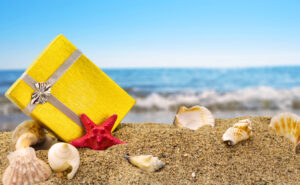Jen Rose Smith
May 13, 2025

Glacier-fed Lake Louise.Scott Osborn
An evolving approach to travel in the Canadian Rockies centers Indigenous tradition and long-term sustainability.
Pausing on a hairpin bend of the climb toward Banff National Park’s summit-wrapped Larch Valley, a traveler might linger even after catching her breath. It’s not just the altitude. Subalpine fir and Engelmann spruce lend the trail a keen, resinous aroma, hinting at deeper forests cloaking peak after peak beyond view.
A thousand miles of hiking trails run through the terrain. Seasons transfigure the scene: Winter brings aurora-lit nights and cross-country skis and snowshoes on forest tracks, while summer wildflowers deck alpine meadows in purple and blushing pink. Banff was Canada’s first national park (and the world’s third) – founded in 1885 after workers building the Canadian Pacific Railway stumbled on its hot springs – and it remains one of the planet’s iconic wild places, a landscape underpinned with simmering heat. It’s fitting that when Stoney Nakoda artists Jarron Poucette and Kyle Kaquitts sought to capture its power in a mural, they titled it Makoche Edaha Mini Po in their Iyethka language: “steam rises from the earth.”
And, at every turn, that rich evergreen perfume – if national parks had signature scents, this would be Banff’s. Travelers will find it, post-hike, at the Fairmont Banff Springs, where spa treatments are infused with ingredients drawn from mountainside and meadow. The Fairmont Spa’s Woodland Walk pedicure uses birch and black spruce mineral bath salts from Mother Earth Essentials, an Indigenous-owned Albertan company whose recipes are rooted in traditional generational knowledge.
It’s a core value shared by many at the UNESCO World Heritage park. For two decades, the landmark Fairmont Chateau Lake Louise has upheld its commitment to practices with no net negative impact on its fragile surrounds. In 2022, when the Banff community – including town leaders and tourism representatives in partnership with Parks Canada – envisioned travel in the coming decade, the resulting framework highlighted “true to place” experiences that sustain not just the environment, but also local communities and culture.

Fairmont Chateau Lake Louise.Getty Images
“What’s so unique about this place is that we’re all privileged to be making our lives within a national park,” says Christie Pashby, director of communications for Banff & Lake Louise Tourism. Banff has drawn a global coterie of travelers to its peaks from its inception. Now, as then, visitors can find an exhilarating taste of wilderness. Cross-country skiers follow miles of beginner-friendly Tunnel Mountain trails from the edge of town, while ice-skaters make the pilgrimage to mountain-flanked Lake Louise when temperatures plunge. If winter feels a little like a locals’ secret, summer’s long days lend their ease to even the biggest adventures. The 4.6-mile round-trip hike to Saddleback Pass earns sweeping views of 11,621-foot Mount Temple, its sheer, banded cliffs towering over forest whose larches turn gilded in autumn.
In downtown Banff, menus honor the park too. Park Distillery Restaurant + Bar’s house-made Alpine dry gin infuses filtered glacier water with foraged Canadian spruce tips (there’s that scent again). “We used to go camping and forage the spruce tips ourselves,” recalls master distiller Scott Coburn, who, like many in Banff, arrived in thrall to the park. Today, the gin’s popularity makes tentside foraging impractical, but the ingredients still go from woods to highball. “It’s a way to capture a piece of Banff and highlight it in our spirits,” he says.
A stroll away, mountain views at season-driven restaurant The Bison complement a signature bison tartare served with salsa verde. Plains bison, once common on the Rocky Mountains’ eastern slopes, were absent from Banff for more than a century. Following a reintroduction within the park in 2017, they’re once again roaming the remote Red Deer and Panther valleys. In late 2024, the park held its first ceremonial bison harvest in 145 years, a free-range hunt for the region’s First Nations. If a true-to-place vision for Banff’s future means bison and spruce tips and time in the woods, it also means honoring practices that far predate the national park.

Piikani artist Kristy North Peigan.Katie Goldie
“A lot of Indigenous peoples would go to Banff and do their vision quest,” says Dawn Saunders Dahl, director of Indigenous curatorial initiatives at Banff’s Whyte Museum of the Canadian Rockies, referring to traditional spiritual journeys. In 2022, Saunders Dahl, who is a member of the Métis Nation of Alberta, helped unveil the first in a series of murals by Indigenous artists at the nearby Cave and Basin National Historic Site, which includes the thermal springs that for thousands of years have been a gathering place for ceremonies and healing. The murals honor the springs’ Indigenous history and their contemporary significance.
“There’s a spiritual connection layered throughout all of their work,” Saunders Dahl says. The springs shimmer violet in the mural by Piikani artist Kristy North Peigan, who chose to depict the site’s female spirit. She titled her mural after the spot’s Blackfoot name, Natooyi Kiiskoom (“holy hot spring”). Images of revered ancestors appear above Banff’s jagged peaks in Eyah Hey Thah Nee, a mural by Iyahre Nakoda artist Gordon Wesley; the name means “these mountains are our sacred places.”
Banff’s compelling power endures today, drawing first-time visitors as it has generations of seekers. This summer, Fairmont Chateau Lake Louise will unveil Basin Glacial Waters, a glacier-fed, lakeshore thermal-bathing facility within the park that pays tribute to the springs’ healing tradition – a meeting of travelers and traditional lands that is, in its call to wellness and connection, deeply true to place. Bathers will soak with views of ice sheets that climb high into the horizon, wrapped in sweet-smelling forests. As ever, steam will rise from the earth.
This article originally appeared in the May/June 2025 issue of Virtuoso, The Magazine (U.S./Canada edition).
